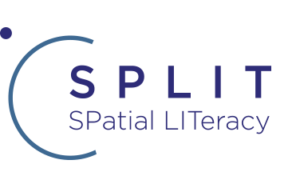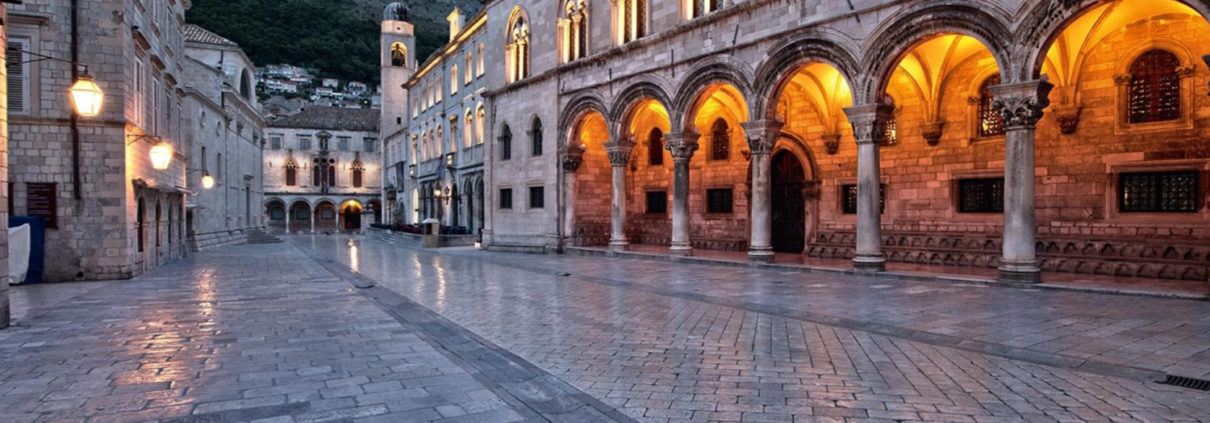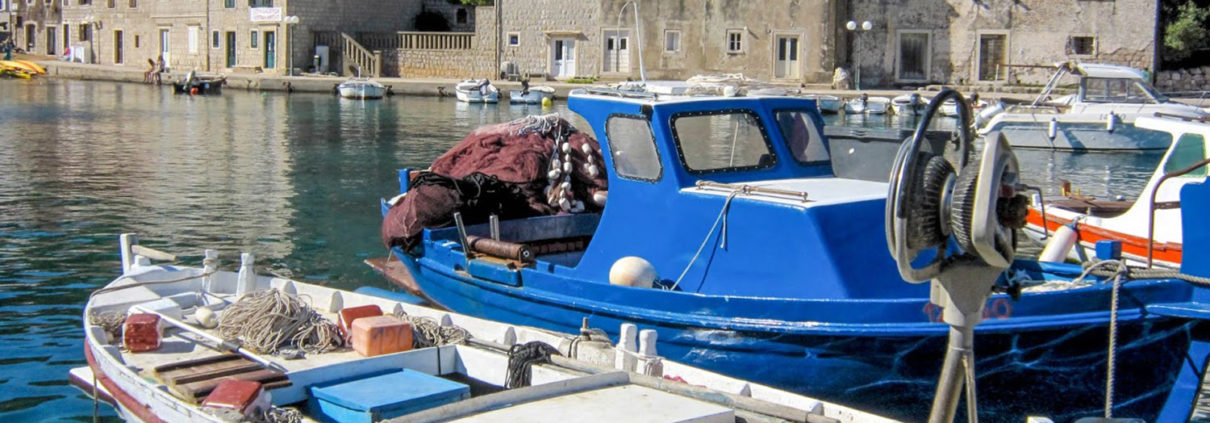ABSTRACTS:
SPLIT REMOTE SENSING SUMMER SCHOOL 2017
TOPICS AND ABSTRACTS:
Dr. MARTIN ISENBURG
– Hands-on course to LiDAR processing with LAStools
Dr. Jean-Philippe GASTELLU-ETCHEGORRY
– The DART Discrete Anisotropic Radiatie Transfer) model
Dr. HARM GREIDANUS
-Maritime phenomena seen in SAR image / Systems for maritime surveillance and their practical use.
Dr. SELIM AKSOY
– Pattern Recognition
Dr. KONSTANTINOS TOPOUZELIS
– SAR Oil spill detection
Dr. KONSTANTINOS TOPOUZELIS
-Coastal Monitoring using UAV
Dr. CLAUDIA NOTARNICOLA
-Biophysical parameters from remotely sensed imagery as a tool for monitoring and evaluating ecosystem biodiversity
Dr. RIBANA ROSCHER
-Unsupervised Learning for Remote Sensing Data
GDi / Authorized representative of Harris
-Hyperspectral Remote Sensing
..
Dr. Jean-Philippe Gastellu-Etchegorry
The DART Discrete Anisotropic Radiatie Transfer) model
The theoretical and hands-on sessions of this course will focus on basic and advanced concepts of the Discrete Anisotropic Radiative Transfer (DART) model. DART models radiative transfer in the system “Earth – Atmosphere”, from visible to thermal infrared. It simulates measurements (images, waveforms,…) of passive and active (lidar) satellite/plane sensors, as well as the radiative budget, for urban and natural landscapes. DART creates landscapes and/or imports them as 3D objects (tree, house,…).
DART is designed for Linux and Windows systems. It works with SQL databases for its data input (atmosphere, optical properties of material,…) and to store the results. It has an advanced graphical interface for entering data and displaying results.
In particular, the course will teach how to generate major DART products such as those related to satellite/plane imagery of passive and active (lidar) sensors, which are very useful for sensitivity studies (e.g., what is the impact of topography on the reflectance, brightness temperature and waveform lidar). Major DART tools are:
– Display of simulated images and 1D/3D Lidar waveforms.
– Launch sequence of simulations with varying parameters (date, LAI,…). It allows one to create LUTs (Look Up Tables) of reflectance and brightness temperature values.
– Reflectance and brightness temperature spectra.
– Reflectance and brightness temperature for the spectral bands of satellite sensors.
– Import and management of 3D objects, natural (corn, wheat,…) and urban.
– Correction of topographic effects on remote sensing images.
– Analysis of 3D radiative budget.
– Creating 3D objects as a set of 3D objects.
______________________________________________
GDi – Authorized Representative of Harris
Hyperspectral Remote Sensing
Hands-on class on processing and classification of hyperspectral data by using ENVI software
Topics covered:
1. Short introduction to ENVI software
2. ENVI software processing tools – overview
3. Example of hyperspectral data processing and classification workflow
4. Exercise – work with hyperspectral data
_______________________________________
Dr. Claudia Notarnicola
Biophysical parameters from remotely sensed imagery as a tool for monitoring and evaluating ecosystem biodiversity
Today together with Essential Climate Variable, it has started the process of the definition of Essential Biodiversity Variable which can support the monitoring and protection of ecosystem biodiversity.
In this context, the benefits of remotely sensed imagery for biodiversity indicators are related to the synoptic view, regular and repeatable acquisitions, multi-annual time series of observations and cost-effectiveness for remote and inaccessible areas. Moreover, the new satellite sensors (such as the Sentinel family) are notably increasing the remote sensing capabilities. Such large data availability has determined the necessity to develop accurate and robust retrieval methods to improve the estimation of these variables from remotely sensed imagery.
The retrieval process of these parameters from satellite images (optical and radar) is typically a challenging task and it falls in the category of ill-posed problem. This means that beyond the non-linearity of the relationship between input features (sensor measurements) and the target variables (soil moisture, biomass, etc.), more than one combination of soil characteristics may lead to the same electromagnetic response at the sensor. Furthermore, given a scene of interest, each system will provide information on a different aspect of the phenomena at the ground (e.g., the spatial patterns or the temporal dynamic) and could be also affected on different extents by different disturbing factors.
This suggests the importance of a synergic use of multiple available remote sensing systems (from satellite to drone based sensors) for a comprehensive, accurate and robust understanding and monitoring of the natural processes at the ground. On the other side the proper selection of the retrieval approach is a key issue.
In this context, the seminar will present currently available techniques for the retrieval of biophysical parameters from remotely sensed data addressing inversion of physical-based models, parametric and non-parametric approaches such as Bayesian procedure, Neural Networks, Support Vector Regression and Ensemble techniques. Each approach will be presented in specific applications indicating advantages, disadvantages and perspectives for the upcoming missions such as Sentinel 1 and 2. In addition the synergic use of different sensors (optical and radar) will be specifically addressed in the context of the retrieval process.
__________________________________________
Dr.Selim Aksoy
Pattern Recognition Techniques for Remote Sensing
The constant increase in the amount of remotely sensed images as well as the urgent need for the extraction of useful information from such data sets have made the development of new pattern recognition techniques a popular research topic for several decades. The complexity of the image content with high spectral as well as high spatial resolution necessitates a good understanding of both the advantages and the limitations of the available methods. In this session, we will cover fundamental topics in statistical pattern recognition such as Bayesian decision theory, parametric and non-parametric density estimation, feature reduction and selection, non-Bayesian classification, and unsupervised learning and clustering. We will also discuss quantitative performance evaluation methods.
______________________________

______________________________

.
Dr. Martin Isenburg
Hands-on Course to LiDAR processing with LAStools
This course will include both theoretical and hands-on lectures on the LiDAR processing tools, which are widely known for their blazing speeds and high productivity. The software combines robust algorithms with efficient I/O and clever memory management to achieve high throughput for data sets containing billions of points. The LAStools software suite has deep market penetration and is heavily used in the commercial sector, government agencies, research labs, and educational institutions alike — filtering, tiling, rasterizing, triangulating, converting, clipping, quality-checking, etc.
More information can be found at: http://rapidlasso.com/2015/09/21/creating-dtms-from-dense-matched-points-of-uav-imagery-from-senseflys-ebee/
_____________________________________________________
Dr. Harm Greidanus
Principles of Synthetic Aperture Radar imaging, and application to maritime scenarios and ship detection
Radar and Synthetic Aperture Radar (SAR) imaging; Maritime phenomena in SAR images.
Ship detection; Systems for maritime surveillance and their practical use.
Understanding the possibilities and limitations of today’s technologies for maritime surveillance, in particular the use of radar images
Radar, and in particular Synthetic Aperture Radar (SAR), is a powerful instrument for maritime surveillance, which has the purpose to be aware of what is happening at sea. SAR images over the sea show the presence of ships, but also show a host of physical maritime phenomena, such as wind, waves, fronts and even sea bottom effects. The operation of SAR from satellites gives global coverage with regular updates, and now that the EU’s Sentinel-1 satellite SAR makes its data available for free there is a huge body of data to work with. The lectures will cover: The principles of radar imaging in general and the specifics of Synthetic Aperture Radar; Maritime phenomena seen in SAR images and SAR imaging effects; Methodology for ship detection and classification in SAR images; Possibilities and limitations of satellite as a platform for SAR; Other available systems and data for maritime surveillance and integration between them. The participants will learn what is possible and what not with satellite SAR for maritime surveillance and ship detection, the current R&D issues, and how to access data.
_____________________________________________________
Dr. Konstantinos Topouzelis
SAR Oil spill detection
This course will include theoretical lecture on the use of satellite SAR images for oil spill detection. It is organized in two parts: familiarization with the oil signature on SAR images and methodologies of detection. In the first part, there will be an introduction to the oil behaviour and the effects on the marine and coastal ecosystems, to the signature of oil spills from ship discharges, and to the way the natural phenomena are seen on SAR images.
In the second section, attendees will be informed on the different methodologies for identifying man made oil spill detection, their characteristic and limitations. The detection procedure will be analysed in terms of dark object isolation, feature extraction, statistical base comparison and finally decision/classification. Examples of spilling activities and lookalikes will be given and attendees will make a manual decision on the presence of oil spills. In the end, Integrated Maritime Services (IMS) will be discussed and examples of combining information from diverse sources will be given.
______________________________________________________
Dr. Konstantinos Topouzelis
Coastal Monitoring using UAV
The constant technological evolution in Computer Vision and Unmanned Aerial Vehicles (UAVs), as well as the miniaturization of sensors, may lead to surveys with high-quality spatial information and products for several applications. The use of UAV systems to costal monitoring will be presented in this course through dedicated examples.
Marine Litter detection: mapping and detecting the extent of the refugee arrival along the eastern coast of Lesvos island, Greece. The objectives of this preliminary study were to assess: (i) the extent of the refugee arrival related marine litter problem along the eastern coast of Lesvos; and (ii) the efficiency and cost-effectiveness of new technologies to provide quick, accurate and quantitative assessments of the marine litter distribution in order to plan efficiently the cleanup operations.
Coastal mapping: Coastal zones identification and 3D costal mapping. This study present methodologies for identifying coastline and coastal zones (coastal morphology). Object based image analysis used to create objects by grouping pixels that had the same spectral characteristics together and extract statistical features from them. The objects produced were classified by fuzzy classification using the statistical features as input.
Seagrass mapping: From ground truth to country scale mapping through local area and regional scale maps. The Common Fisheries Policy of EU requires mapping highly important habitats for fish production (e.g. underwater flowering meadows) in all EU Member States for the sustainable management of living aquatic resources and marine ecosystems. This is an example of seagrass mapping by aerial orthophoto and satellite images in several spatial scales.
Marine spatial planning: the use of high resolution spatial data towards the protection and conservation of biodiversity in the context of an integrated Marine Spatial Plan (MSP) in the Aegean Sea. This is an example on the use of UAV and satellite data for defining Marine Protected Areas (MPAs) and protection zones for the conservation of all-important and vulnerable habitats and species, as defined by national and community legislation and international agreements.
High Precision Survey of coastal areas: a flexible and attractive solution to produce accurate and high qualitative spatial data and geo visualizations. This is an example of significant contribution to cost effectiveness of monitoring the coastal area from stakeholder perspective.
_____________________________________________
Dr. Ribana Roscher
Unsupervised Learning for Remote Sensing Data
An unprecedented amount of remote sensing data is now available due to the growing number of satellites with embedded sensors characterized by increasing spatial and spectral resolution. The analysis of the data is often a prerequisite for a successful interpretation, and demands for unsupervised learning techniques. This course will introduce various techniques for unsupervised learning for remote sensing data. It covers the big data aspect of remote sensing data, classification paradigms exploiting unlabeled data, sparse representation and analysis techniques which are designed to deal with large-scale data.


